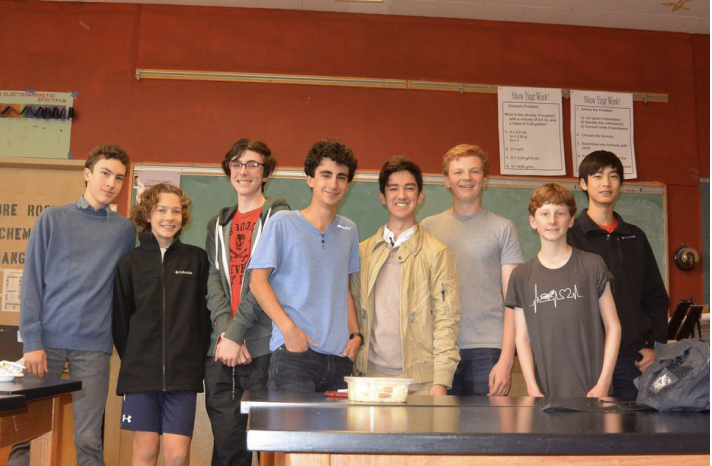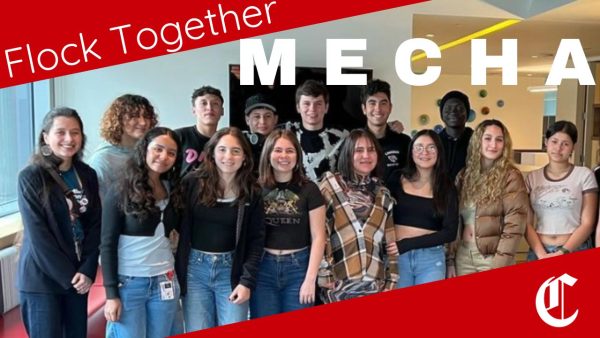Rocket club soars to new heights
Photo Courtesy of Lincoln Rocket Club Website
Founder Josh Gregory and the rest of Lincoln Rocket Club meet in room 116 every Friday during lunch
By a stroke of luck, Josh Gregory, senior at Lincoln High School, found a gap in the amateur rocketry sector. On a routine flight, Gregory’s mother, in total coincidence sat next to Vice President of engineering at Aerojet Rocketdyne, a large aerospace company based out of California. Through conversation, it was suggested that Gregory immerse himself into engineering and rocketry through joining a local rocket club.
Despite Lincoln’s vast amounts of clubs, Gregory was shocked to find that Lincoln offered no such thing. Gregory found that a large explanation for this issue could be the cost associated with rockets and performing launches.
“You have a lot of commercial availability for people that have incredibly deep pockets,”said Gregory.
However not having money or a club didn’t stop Gregory and instead ignited an interest that has since been a constant effort to found the Lincoln Rocket Club.
“The Lincoln Rocket Club is attempting to do in the amateur sector is doing what SpaceX has done with the commercial sector,” said Gregory.
Gregory began to notice that extensive research has been done involving rockets, yet they have all been done by the same companies all in the commercial sector. Currently, $600 is required for a single amateur launch, but the Lincoln Rocket Club is in works to lower this price to $60, a staggering 90 percent in cost reduction.
“For people who are in the amateur spectrum, it’s much much more difficult, people can’t afford it,” said Gregory. “If you reduced the price you can have many more people participate and use their ideas.”
Following the founding process, the club only hand drew the first initial iterations of the launch platform and rocket. This was then transferred to an online program where they can design what they need. Prints are done through a 3D printer, all of which can be completed in 24 hours, compared to its previously first month and a half timeline.
Jared Chen, a senior at Lincoln, joined Gregory soon after he started the club. Chen works mainly on the design, attempting the improve the rocket, launch platforms, and other factors.
“We are trying to shave off as many grams as we can without affecting the structural damage,” said Chen.
Chen originally joined the club out of personal interest after hearing Gregory discuss it and has helped run, and organize the club with Gregory.
“Seeing the club from two people to what it is today is quite an amazing experience,” said Chen.
Gregory and Chen get parts for the rocket online and design other pieces on their own. The fuselage of the rocket is made from an ordered kit along with the nose cone and the engine motor is bought. The launch platform, launch computer, and airfoils are all designed by Gregory and Chen.
The two use their knowledge from Lincoln IB Physics classes to design, but also take pages out of other successful aviation examples such as the P-51 Mustang, an infamous single-seater fighter jet used in WWll. They rearranged the fin of the rocket into the shape of an airfoil made of carbon fiber, similar to the P-51. The two have also lowered total weight by 70 percent; the two-foot launch platform weighing less than a single iPhone.
“Our overall design has become concise and efficient over the past two years, just mainly through apply[ing] what we learned through previous iterations,” said Chen.
Gregory explained that while he may not be on the traditional Lincoln High School student route to start a club that involves rockets, he is extremely proud of it. It’s all about being creative in doing something new.
“We have to figure out everything from the ground up, nobody has done this before,” said Gregory, “We are the only high school that I can find in the world that is doing this and one of the few outside of universities.”
As the club has grown, so has their goals. They will continue to innovate, hoping to get Federal Aviation Administration clearance in order to reach altitudes of 22,000 feet as soon as March.











